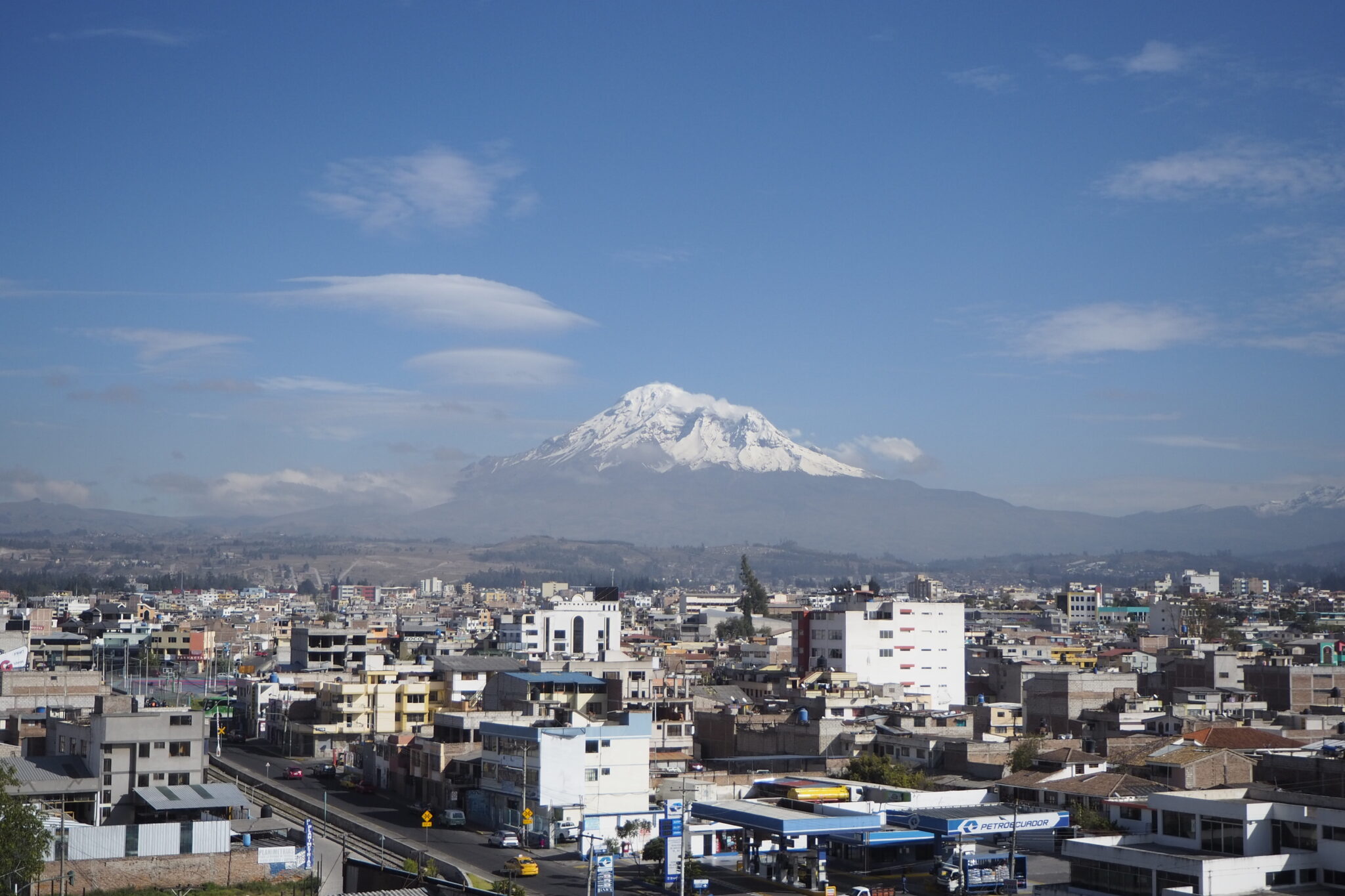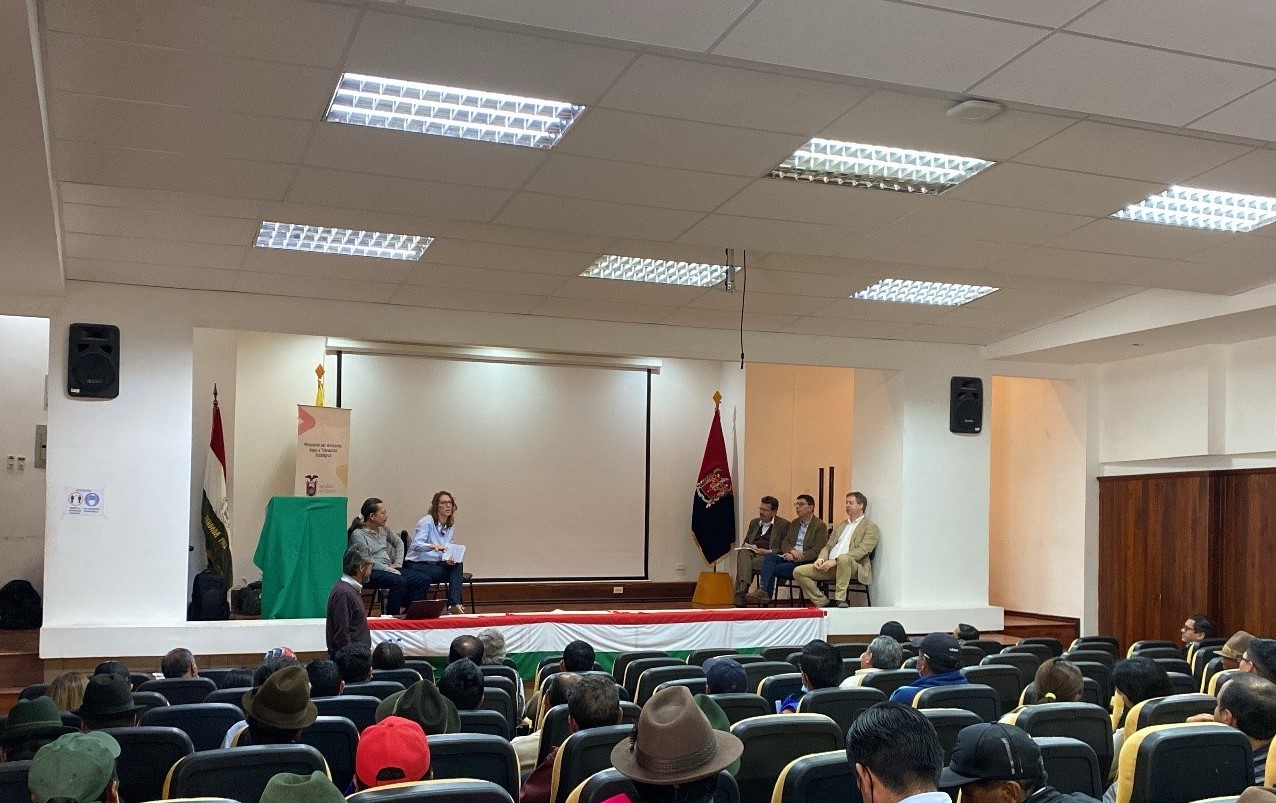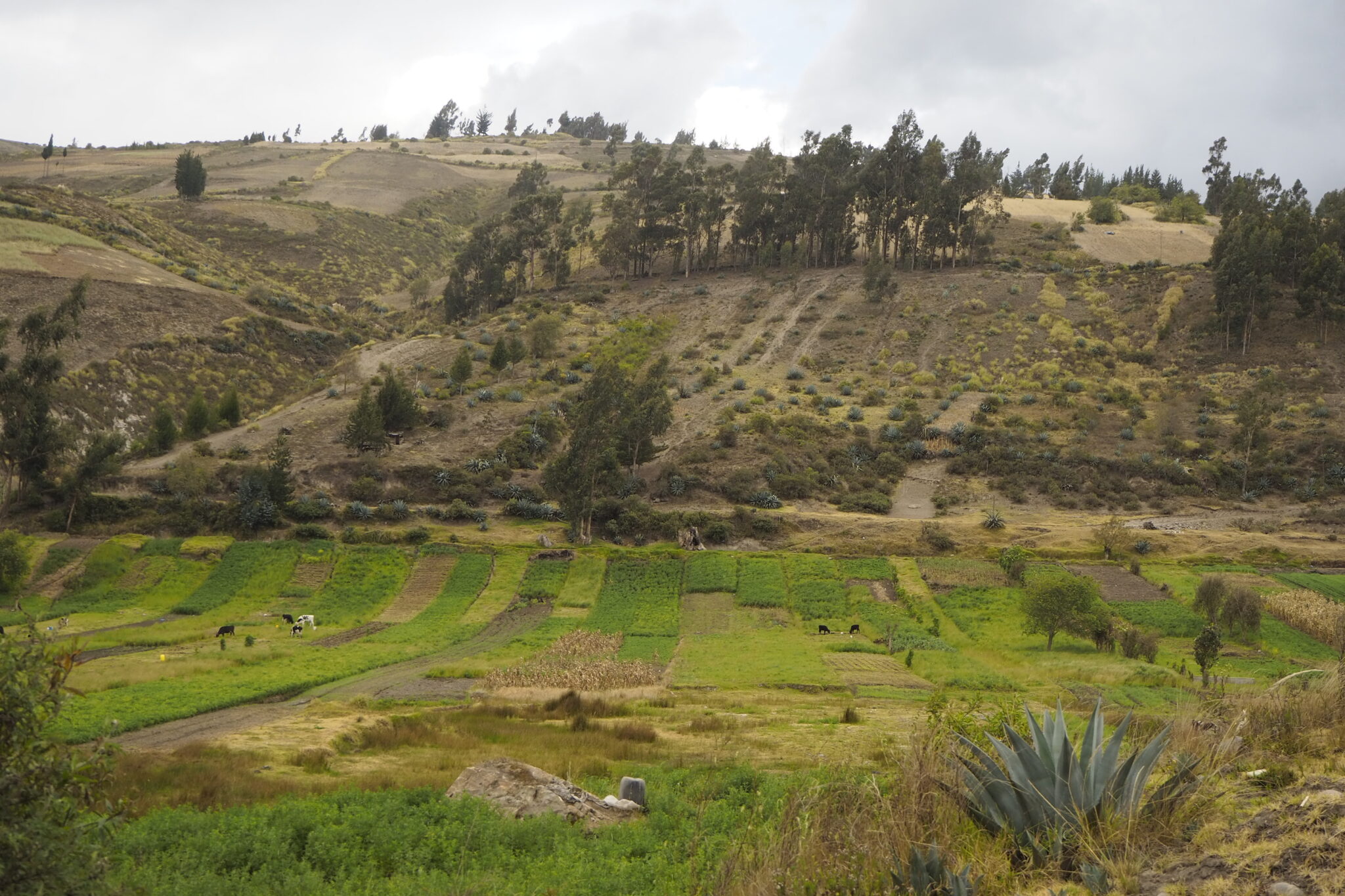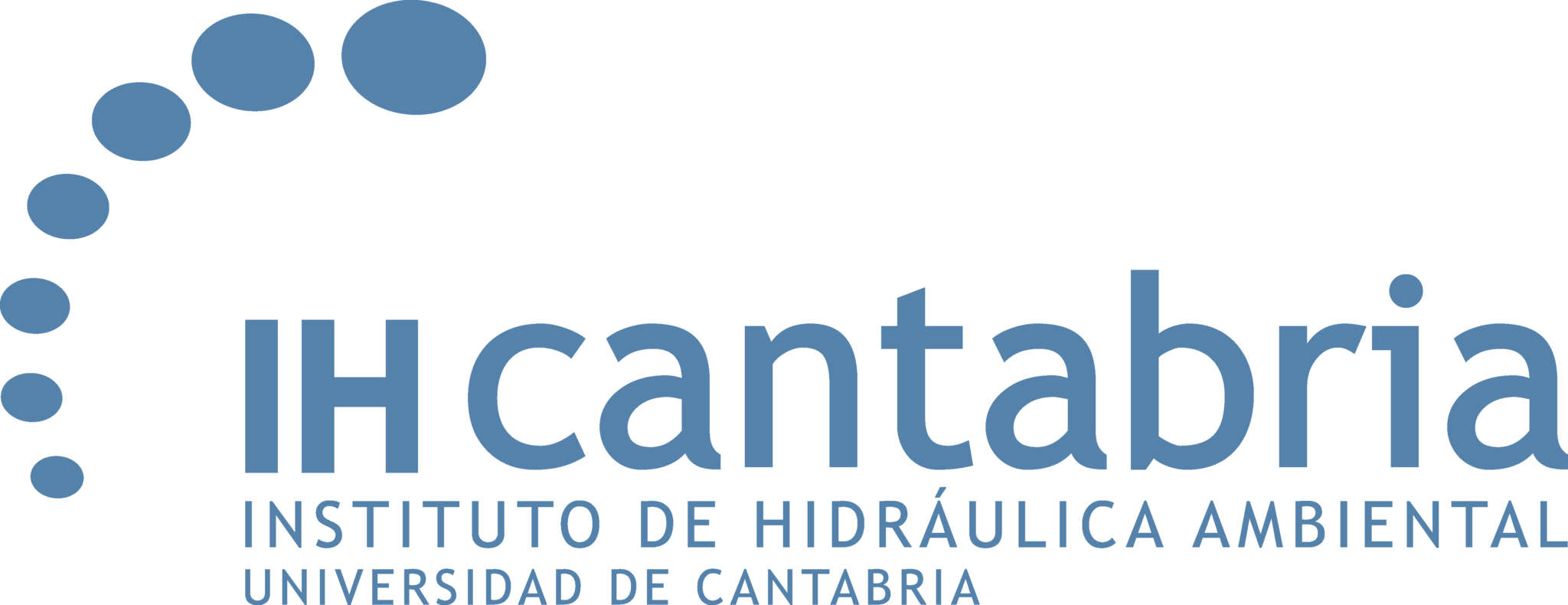NEWS
IHCANTABRIA contributes to the development of highly relevant projects with participatory strategies in Latin America.

Chimborazo Volcano, part of the Andes Mountains, seen from Riobamba.
The drafting of the Integrated and Comprehensive Management Plan for the Chambo River Basin, in Ecuador, was carried out after a public participation process, with the objective of promoting sustainable water management in its different uses and developments.
One of the essential pillars of the work developed at the Environmental Hydraulics Institute of the University of Cantabria (IHCantabria) is the transfer of knowledge and technology at the national and international level. An example of this is the work developed by the research staff of this institute, at the request of the Ministry of Environment, Water and Ecological Transition of the Republic of Ecuador. Their work consisted in the development of the Integral and Integrated Management Plan for the Chambo River Hydrographic Basin (PMICHRC, for its acronym in Spanish), in Chimborazo, Ecuador. The project was financed by the Inter-American Development Bank (IDB).
The development of this plan was intended to organize the management of water resources in the Chambo river basin, paying special attention to urban supply, irrigation and the protection of the quality of water sources. Therefore, the objective of the PMICHRC was to promote sustainable water management in its different uses, ensuring the availability of this resource for human consumption, through the identification and prioritization of investments in water infrastructure, with water management and governance measures.
To achieve this objective, IHCantabria was asked to send a technical team to contribute to the development of the PMICHRC in Ecuador. This work was led from Cantabria by César Alvarez Díaz, head of the Hydraulic Engineering Group of IHCantabria. A technical team from this institute, made up of Eduardo García Alonso, Elsa Cacho, Adrián Villa and Jorge Rojo, supported the execution of the project.
The work carried out by the IHCantabria team contributed to the participatory strategy that characterized the different phases of the project, in close coordination with the staff of the Ministry of Environment, Water and Ecological Transition of Ecuador. Therefore, the development of the PMICHRC also involved local consultants with expertise in hydrology, agronomy, sociology and law, as well as local stakeholders.
The development of the plan, to which a technical team from IHCantabria contributed, from January to December 2022, is a high priority in Ecuador’s constitutional order, to guarantee the country’s food sovereignty.
The Chambo river basin is located in central Ecuador, between the provinces of Chimborazo and Tungurahua, in an area known as the Avenue of the Volcanoes. It covers a territory of 3,580 km2, where there are enclaves with high environmental, cultural and scenic value. The Chambo River is 127.4 km long and is the headwaters of the Pastaza River hydrographic system, which is a tributary of the Amazon River.
This project was developed in three different phases: the initial phase was diagnostic; the intermediate phase focused on the development of the PMICHRC and, in the final phase, three action projects related to sustainable water management were written. These projects respond to trends in water resource availability in the future, which could be conditioned by climate change.
The Institute of Environmental Hydraulics of the University of Cantabria (IHCantabria) is a joint research institute focused on the integrated management of socio-ecological systems associated with water. Founded in 2007, its mission is to promote scientific excellence and its transfer to drive innovation that contributes to accelerate the achievement of the Sustainable Development Goals, as well as the promotion of a just, inclusive, responsible and resilient society.

Presentation of the project in November 2022, in Riobamba, Ecuador.

Crop fields characteristic of the hydrological basin of the Chambo River, Ecuador.



